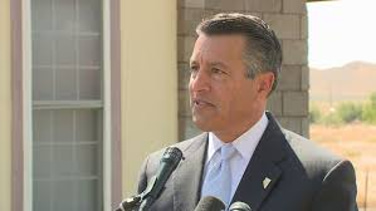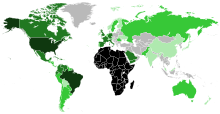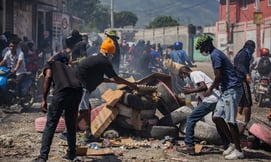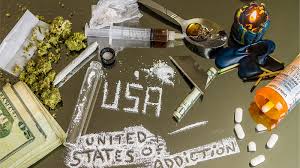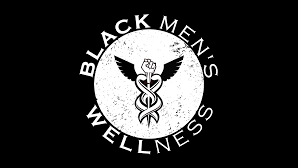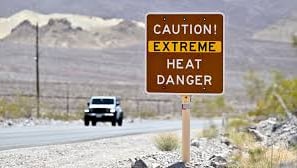Welcome
Oji African American Diaspora Blog
"Be Aware of The Evils of The Devil - But Learn & Follow The Commandments of Almighty God"
African American Diaspora
World African Diasporas
Pew Research Cites 48.3 Million African Americans in the U.S. in the African American Diaspora in 2023 Including 5.1 Million Foreign-Born Black Americans (Pew Research Center)
African Diasporas are World-Wide Communities Inhabited by Descendants of Africans In Which, Over 350-Million People of African Descent Live Outside of Africa (Africa Diaspora)
American Worries
Will The Dictator Trump End American Democracy
Americans Are Worried About U.S. Social Security
The tradition of Independence Day celebrations began in the 18th-century with the American Revolution. On July 2nd, 1776, the Continental Congress voted in favor of independence, and on July 4th, delegates from the 13 colonies adopted the Declaration of Independence, a historic document drafted by Thomas Jefferson. On July 6, 1776, the Liberty Bell rang from the Philadelphia tower of Independence Hall, as citizens gathered for the first public reading of the Declaration of Independence by Colonel John Nixon. From 1776 to the present day, July 4th has been celebrated as the birth of American independence, with festivities ranging from fireworks, parades, concerts to more casual family gatherings and barbecues. Although the vote for actual independence took place on July 2nd, however, it was on July 4th, that the Continental Congress formally adopted the Declaration of Independence. Therefore, the 4th became the day celebrated as the birth of American independence. During the summer of 1776, some American colonists celebrated the birth of independence by holding mock funerals for King George III as a way of symbolizing the end of the monarchy’s hold on America and its triumph of liberty. Betsy Ross, a seamstress and upholsterer, sewed the first American flag in May or June of 1776, after George Washington, Robert Morris, and George Ross, 3-members of a secret committee from the Continental Congress, met with her in her home. On June 14, 1777, the Continental Congress passed a resolution adopting the flag sewed by her, as the official flag of the United States. This flag was described as having thirteen alternating red and white stripes and thirteen white stars on a blue field. This resolution, known as the Flag Act, is commemorated annually on Flag Day. Philadelphia held the first annual commemoration of independence on July 4, 1777, while Congress was still occupied with the ongoing War of Independence. The tradition of setting off fireworks on the 4 of July began in Philadelphia on July 4, 1777, during that first organized celebration of Independence Day. Ship’s cannon fired a 13-gun salute in honor of the 13 colonies. The Pennsylvania Evening Post reported: “at night there was a grand exhibition of fireworks, which began and concluded with thirteen rockets on the Boston Common, and the city was beautifully illuminated.” That same night, the Sons of Liberty set off fireworks over Boston Common. General George Washington issued double rations of rum to all his soldiers to mark the anniversary of independence in 1778, and in 1781, several months before the key American victory at the Battle of Yorktown, Massachusetts became the first state to make July 4th an official state holiday. The bald eagle, chosen as the symbol of the United States because it symbolized the nation's strength and independence, and in 1782, the Bald Eagle was depicted on the Great Seal of the United States, which was approved by the Continental Congress. The tradition of patriotic celebration became even more widespread after the War of 1812, in which the United States again faced Great Britain. In 1870, the U.S. Congress made July 4th a federal holiday. And in 1941, the U.S. Congress expanded the previous holiday provision, to grant July 4th, as a paid holiday for all federal employees, in addition to the holiday being designated as a federal holiday. (History).
Conflicts in The World
Trump Can't Stop War in Ukraine - Putin Can't Win
China's Militarization of The South China Sea
Donald Trump promised that he would end the Ukraine war within a day if he became President of the United States. However, more than four months since his inauguration that goal looks impossible. President Trump, who has been eager to bring Ukrainian President Zelenskyy and Russian President Putin to the table, has been showing signs of frustration, suggesting that he is prepared to "just back away" and allow the fighting to continue if the two leaders can't soon make progress. Seth Jones, of the Center for Strategic and International Studies (CSIS), describes the U.S. role so far in the negotiations as "relatively weak" and he cautions that if the Trump administration were to walk away from the talks "it would fundamentally shift the balance of power in the war to the Russian side." According to an April 2025 United States assessment, an estimated 790,000 Russian soldiers have been killed or injured since the Feb. 24, 2022, invasion of Ukraine, while Presideht Zelenskyy has said more than 400,000 Ukrainian forces have been killed or injured since the start of the war. Seth Jones says: "The Russian preference is, for the war to end on the battlefield with a Russian victory, rather than have to go to any kind of serious peace talks where they may actually have to give up some of their objectives," (or the land they've already seized in Ukraine). Even before the start of Trump's second term, his remarks on the campaign trail telegraphed a notable shift away from the Biden administration's unqualified support for Ukraine. In a podcast appearance, Trump suggested that Zelenskyy was to blame for the invasion. In March 2025, days after Zelenskyy's meeting with Trump in the Oval Office, the White House announced it was suspending critical aid and intelligence sharing with Ukraine a decision that risked undermining Kyiv's position on the battlefield and potentially giving Russian forces a strategic advantage. On April 19, 2025, Russia announced a 30-hour Easter truce, which Ukraine accepts, but both sides accuse each other of violating the truce. Days later, the U.S. proposes a peace plan that would freeze the war's frontlines, recognize Russian control over territories already seized in Ukraine, and Ukraine would forgo NATO membership. Both sides reject the plan. On May 16, 2025, facilitated by Turkey, Russian and Ukrainian officials meet face-to-face in Istanbul, their first direct talks since the invasion began in 2022. That meeting resulted in a prisoner swap, with over 1,000 prisoners released by each side. However, beyond the swap, the discussions yielded little progress (NPR). Donald Trump has long held admiration, maybe even love for Putin. In June 2013, then-Miss Universe owner Donald Trump tweeted, "Do you think Putin will be going to The Miss Universe Pageant in Moscow, if so, will he become my new best friend?" Putin ultimately did not attend. However, Putin reportedly sent Trump an apology and a gift. What will Trump do regarding his friendship with Putin and the war in Ukraine, now that he has said: "Something has happened to Putin, he has gone crazy." "needlessly killing a lot of people.” What Trump doesn't want to realize is that the list of influential Russians who have been killed or died after crossing Putin is long. and getting longer. Also, according to a January 2025 report on the Russia-Ukraine War, 400,000 Ukrainian soldiers have been killed or injured, 35,00 missing, 112,500 Ukrainian civilians have killed, and 10.2 million Ukrainians displaced (HarvardKennedy School).
Tensions in the South China Sea continues, as they stem from overlapping territorial claims and maritime rights disputes, primarily between China and its neighbors, specifically the Philippines, Vietnam, Malaysia, and Brunei. China's aggressive claims, including its nine-dash line (Wikipedia), encompasses a large portion of the South China Sea, and has fueled the conflict. The nine-dash line, is a set of line segments used by China to assert territorial claims in the South China Sea. These claims encompass a vast area, including various islands, rocks, and shoals, and overlap with the exclusive economic zones of other countries like Brunei, Indonesia, Malaysia, the Philippines, Taiwan, and Vietnam. The South China Sea is an important trade route that is estimated to carry around 24% of global maritime trade worth about $7.4 trillion per year. This area also includes an estimated 11-billion barrels of untapped oil and 190-trillion cubic feet of natural gas. Beijing’s disputes are further complicated by the region's strategic importance for trade routes and natural resources. China's nine-dash line is highly controversial and has been the subject of numerous disputes and debates. The nine-dash line has been interpreted in different ways, including as a claim to territorial sovereignty over all waters within the line, a claim to "historical rights" over resources, or a claim to specific islands and rocks. China's military actions in the South China Sea have been characterized as the militarization of the islands, using aggressive maritime patrols, and the use of Gray Zone Aggression tactics to exert control over the region. This includes the construction of airfields, radar facilities, and missile systems on disputed islands, as well as the deployment of coast guard and navy vessels for patrols and maneuvers. In September 2024, a Chinese ship rammed a Philippine coast guard vessel while a U.S. news crew filming 60 Minutes was on board, severely damaging the ship. Since 2022, these confrontations have become the norm. This increasing aggression from Beijing has cast doubts on the ability of the U.S. and its allies in the region to continue to deter Chinese advancements and halt democratic decline. China's actions are often described as undermining international law and undermining the sovereign rights of other coastal states. China’s continued illegal activities in the South China Sea and refusal to adhere to the rule of law are a threat to freedom and democracy worldwide. If the situation continues to escalate as it has, it could significantly increase the risk of conflict and instability in the region, which would have serious ramifications for the global community and the international rule of law. Were Beijing to dominate the South China Sea, it would make it difficult for the United States to carry out its objectives in the region. For example, it would become much more difficult to intervene if conflict arose between China and Taiwan, which could encourage Beijing to carry out its threats of invasion. America’s relationships with like-minded allies offer the most effective defense the United States has against China’s authoritarian reach in the South China Sea. Working to strengthen these relationships in the Indo-Pacific will be vital to curbing China’s influence and deterring the rise of a China-led global axis of authoritarianism (George W. Bush Presidential Center).
Older Adults in The U.S.
The United States Space Force is the newest branch of the United States military, established on December 20, 2019, and focuses on military operations in space. Its core mission is to protect U.S. and allied interests in space and to provide space capabilities to the joint force. The U.S. Space Force is focused on space operations, including satellite communications, missile warning, and ensuring the security and accessibility of space for military operations The United States Space Force is part of the Department of the Air Force and is responsible for organizing, training, and equipping Guardians to conduct global space operations. The need for a separate, space-oriented branch of service was driven by the quickly evolving space domain, and a growing threat posed by near-peer competitors in space. The origins for operations in space goes back to the U.S. Air Force, Army and Navy’s military space programs created during the start of the Cold War. The U.S. Air Force in 1954 created a division tasked with overseeing the U.S. military's ballistic missiles. In 1982, the Air Force updated Air Force Space Command, making it the first operational space command in the U.S. Armed Forces. From the 1950s, the Department of Defense focused on developing space capabilities to support national military objectives, such as surveillance and reconnaissance, communications, and navigation, while simultaneously supporting manned spaceflight programs under NASA. On December. 20, 2019, Air Force Space Command was renamed United States Space Force and established as an independent service, as of the 2020 National Defense Authorization Act. Then in January 2023, the U.S. Space Force consisted of 4,286 enlisted service members and 4,314 officers, whose service members are known as Guardians, according to the Air Force Times, making it the smallest branch of the U.S. military. According to the U.S. Space Force's mission statement, the service is responsible for "organizing, training, and equipping Guardians to conduct global space operations that enhance the way America's joint and coalition forces fight, while also offering decision-makers military options to achieve national objectives." To accomplish this mission, Space Force is organized into three main divisions: Field commands, Deltas and squadrons. The service's three field commands are Space Operations Command (SpOC), Space Systems Command (SSC) and Space Training and Readiness Command (STARCOM). Field commands oversee broad mission goals. Within each field command are various Space Force Deltas. Deltas have a specific function, such as operations, training or facility support, according to a 2020 Space Force statement. For example, Space Launch Delta 45 (SLD 45) at Cape Canaveral Space Force Station in Florida is tasked with overseeing all space launch operations from the U.S. East Coast,. SLD 45 manages the Eastern Range, a massive rocket range that stretches out over the Atlantic Ocean into the Indian Ocean, and provides launch support for the DOD, NASA and private space launch providers (About Space).
In the United States, children and adolescents, at the ages 0-19, comprise a significant portion of the population, with roughly 70-million individuals falling into this category. This age group experiences a unique set of mental health challenges, with there being an increase in emergency department visits with mental health-related diagnoses, particularly among younger age groups. In 2023, more than 5.3-million adolescents, ages 12-17 years, had a current, diagnosed mental or behavioral health condition, such as anxiety (16.1%), depression (8.4%), or behavior/conduct problems. Among children, anxiety problems, behavior disorders, and depression are the most commonly diagnosed mental disorders. The Centers for Disease Control and Prevention (CDC) show that: Approximately 11% of children aged 3-17 have a diagnosed anxiety disorder; Around 8% of children of the same age group are diagnosed with behavior disorders, and Approximately 4% of children aged 3-17 experience diagnosed depression. These disorders can significantly impact a child's well-being and daily functioning, highlighting the importance of early identification and intervention. Adolescent mental health issues are of significant concern, with anxiety, depression, ADHD (Attention-Deficit/Hyperactivity Disorder), eating disorders, and conduct disorder being the most common adolescent mental health issues. Anxiety Disorders in adolescents are characterized by excessive worry, fear, and nervousness that can interfere with daily activities; Depression in adolescents involves persistent feelings of sadness, hopelessness, and loss of interest in activities, and changes in sleep, appetite, and energy levels; ADHD (Attention-Deficit/Hyperactivity Disorder) is a neurodevelopmental disorder marked by inattention, hyperactivity, and impulsivity, making it difficult for adolescents to focus, control their behavior, and manage their emotions; Eating Disorders involve extreme disturbances in eating behaviors and thoughts about food and weight. Examples include anorexia nervosa, bulimia nervosa, and binge-eating disorder Conduct Disorder is a behavior disorder characterized by persistent patterns of aggression, disobedience, and violation of rules and social norms. Conduct disorder can lead to problems in school, at home, and in relationships. Intervention and treatment for children and adolescent mental health disorders involves a range of approaches, including therapy, medication, and family support, often tailored to the individual's specific needs and age. Early intervention is crucial for positive outcomes, which includes focusing on spotting and treating the first signs of trouble, offering a chance to address and treat mental health challenges early. Various strategies are available to support young people's mental health well-being, such as open communication, healthy habits, creating supportive environments, school-based programs and parent-focused interventions (National Library of Medicine
President Trump cares only about power: corporate, presidential, and national. And he cares little about democracy, except in the most utilitarian sense. For Trump, democracy is a ladder that he can use to ascend to power. He is not interested in promoting democracy abroad or strengthening democracy here in America. Trump, in his second inaugural, promised to promote American power, not American principles. “We will bring prices down, fill our strategic reserves up again, right to the top, and export American energy all over the world.” Trump promised to push American cars and promote the U.S. military, not least of which to retake the Panama Canal. The problem for the foreseeable future lies with what Trump will do to American democracy in the United States. Trump is a convicted felon who attempted to remain in power even after he lost the 2020 election. Avoiding prison was perhaps the chief motivation for Trump to win the 2024 elections. His victory led to the dismissal of the criminal case. To avoid a prison sentence, Trump resorted to lies, distortions, and threats to win the 2024 election. He also relied on the deep pockets of billionaire Elon Musk to sponsor deceptive ads and buy votes in swing states. Trump promised to be a dictator on his first day in office. It’s not surprising, that he issued the most executive orders of any president on inauguration day. Both Democrats and Republicans have collaborated in expanding the powers of the presidency. But Trump has gone beyond what other presidents have done, for instance, he challenged the U.S. Constitution itself by declaring an end to birthright citizenship. He also pardoned the January 6 insurrectionists, which sends a disturbing message to the citizenry about the lack of consequences for those who attack the federal government. Trump will take a chainsaw to government, cutting the regulatory agencies that implement policy and keep Americans safe. Democracy, in the modern world, requires state power. By cutting back on federal authority, Trump will instead empower conservative states, corporations, and religious institutions (Institute for Foreign Policy).
China & Risk of War in The Taiwan Strait
Africa News
A Nation Built With Its People All
Equal, That They Are Endowed, By Their
Creator, With Certain Unalienable Rights
American Federal Holiday
Climate Change in The U.S.
On June 25, 2022, Esteban Chavez, Jr., 24 years old, started his day, working his route in Pasadena, Calif., as a driver for UPS. But the city was in the middle of an intense heat wave, and by midafternoon the temperature was higher than 90 degrees Fahrenheit. After completing his last delivery of the day, Chavez collapsed off his seat in the cab of the truck. He went unnoticed for 20 minutes before the homeowner at his delivery location saw him and sought medical assistance. Chavez's family said he died from heatstroke as a result of heat exhaustion. According to the Environmental Protection Agency, the number of heat-related illnesses and fatalities in the U.S. has been going up since the 1980s, as a direct result of the rise in the Earth's temperatures. Approximately 1,300 people die in the U.S. every year from exposure to extreme heat, and that figure will almost certainly increase with the accelerating effects of climate change. Exposure to extreme heat can damage the central nervous system, the brain and other vital organs, and the effects can set in with terrifying speed, resulting in heat exhaustion, heat cramps or heatstroke. Extreme heat also exacerbates existing medical conditions such as hypertension and heart disease and is especially perilous for people who suffer from chronic diseases. The elderly population is at high risk, and children, who may not be able to regulate their body temperatures as effectively as adults in extreme conditions, are also vulnerable. But people of all ages can be endangered. Studies show that outdoor workers regardless of age are most likely to experience the consequences of extreme heat exposure. Extreme heat is the number-one weather-related cause of death in the U.S., and it kills more people most years than hurricanes, floods and tornadoes combined. (Scientific American). The United States in 2025, is experiencing the continued effects of climate change, with rising temperatures, extreme weather events, and shifts in precipitation patterns. May 2025, was globally, the second warmest period on record, and the year is virtually certain to rank in the top five warmest on record for the US, with a strong likelihood of being in the top two according to Climate Central and Yale Climate Connections. This warming trend is leading to more frequent and intense heat waves, particularly in the Northwest, Southwest, Gulf Coast, and Northeast. Drought conditions are expected to persist or worsen in the West, while the East may see some improvement. As meteorological summer officially begins on June 1, 2025, the United States is preparing for what may become one of its hottest summers in recorded history. The National Oceanic and Atmospheric Administration has issued an alarming seasonal outlook, forecasting significantly above-average temperatures across nearly the entire United States. The Economic Times reported the 2025 summer projection offers little reprieve anywhere in the U.S. or even in most of Alaska. Driven by persistent atmospheric patterns, elevated sea surface temperatures, and the residual effects of climate change, the summer of 2025 is shaping up to test the nation’s resilience to heat, wildfire, and health crisis. From densely packed urban neighborhoods to arid rural lands, the effects of this prolonged heat event are expected to ripple across infrastructure, agriculture, public health, and emergency services (Times of India). Rising global temperatures, fueled by climate change, are causing more frequent and intense heat waves, leading to a greater risk of heatstroke, heat exhaustion, and the exacerbation of pre-existing health conditions. Extreme heat is a more frequent cause of death than storms in many regions, and climate change is exacerbating this trend. Extreme heat events are responsible for a greater number of overall deaths, particularly in urban areas and during heat waves. Heat-related deaths often occur gradually and are less dramatic than storm-related fatalities, making them less likely to be widely publicized. According to the Scientific American in the U.S., extreme heat kills more people annually than hurricanes, floods, and tornadoes combined. Although storms can have devastating local impacts, extreme heat can affect large populations simultaneously, and its effects are often underestimated. Extreme heat can also worsen cardiovascular and respiratory problems, kidney disease, and other health issues, making vulnerable populations particularly susceptible to heat-related deaths, according to the Environmental Protection Agency. Although there is no fail-safe approach to addressing the risks associated with high heat exposure, the potential dangers of excessive heat extend beyond physiological health to facets of life such as increased rates of domestic violence and crime. There are economic consequences, too: according to the Atlantic Council, the U.S. could lose some $100 billion annually because of extreme heat effects.
The U.S. Census Bureau projected the United States human population to be 335,893,238, on January 1, 2025 - The U.S. is comprised of a mosaic of cultural diversity, with 40% of its people identifying as racial or ethnic minorities: White, 59.7%; Hispanic, 19.9%; Black, 12.7%; Asian, 6.3%; Multiple Races, 2.6%; American Indian/Alaska Native, 0.7%; Native Hawaiian/Other Pacific Islanders: 0.2% - Visualizing the U.S. Population by Race
U.S. Environmental Contamination
Conflicts in The World
Gang Violence, Famine & Displacement in Haiti
Haiti's political, economic and security crisis has continued to deteriorate in 2025. Criminal gangs exert significant control, particularly in the capital, Port-au-Prince, with estimates suggesting they control up to 90% of the city. Gang violence has long been a problem in Haiti, but it has worsened dramatically due to shifting power dynamics. This rise in gang activity has had devastating consequences for the country and its people, severely impacting human rights. The situation escalated following the assassination of President Jovenel Moïse in July 2021, which left Haiti without effective leadership. Armed gangs capitalized on the power vacuum, using violence to expand their control over communities. An unchecked flow of illegal weapons and ammunition from other countries and weak law enforcement allowed gangs to operate freely as they compete for control of territory. By early 2024, gang activity had brought the capital to complete paralysis. Attacks on police stations, hospitals, neighborhoods and essential infrastructure that interrupted daily life, leaving millions in chaos and fear. Haiti has witnessed a dramatic surge in gang violence between 2021 and 2024, leading to thousands of deaths and injuries, widespread displacement, and severe human rights abuses. In 2024, at least 5,601 people were killed, 2,212 injured, and 1,494 kidnapped due to gang violence, despite the deployment in 2024 of a Kenya-led, United Nations-authorized Multinational Security Support Mission (MSS) that the U.S. government has helped train and equip. On September 22, 2023, there was formation of an alliances of major gang coalitions, G9 and Family and G-PEP, merging into the Viv Ansanm coalition which have launched coordinated offensives against critical civilian infrastructure, including the main port and roads, affecting commerce and humanitarian aid. The coalition faced skepticism at inception, as many doubted its durability due to long-standing rivalries and differences among its members. However, coordinated Viv Ansanm incursions launched on February 29, 2024, aimed to force Prime Minister Ariel Henry to resign, demonstrated the coalition’s ability to adapt, negotiate, and work cohesively toward shared goals. These attacks led to the March 11, 2024 resignation of Henry. Since April 2024, Haiti has been governed by a Transitional Presidential Council, which is tasked with governing until elections can be held. The Multinational Security Support (MSS) mission in Haiti, authorized by the UN Security Council in October 2023, was aimed at stabilizing the country, addressing escalating gang violence and the humanitarian crisis. The mission is led by Kenya and aims to provide security for critical infrastructure, support the Haitian National Police (HNP), and create an environment conducive to aid delivery and elections. Gangs have perceived the MSS mission as an emerging threat, prompting them to adapt their operations in the lead-up to the troops’ deployment. Gang activity has led to mass killings, kidnappings, sexual violence, and forced displacement. Between January and March 2025 alone, at least 1,617 people were killed and 580 injured due to violence involving gangs, self-defense groups, and others. Over 1 million Haitians are now internally displaced (Amnesty International).
International Conflicts That Create Atrocities & Human Suffering
U.S. Active Military & Veterans
Issues of Concern To People In The United States
Independence Day July 4, 2025
Dispersion of African Americans in U.S.
Dispersion of African People Around World
Many Americans express concern about various social issues, where as, a large number of Americans are worried about the future of Social Security and about the potential for cuts or changes to the program. A new Gallup poll shows that concern about the Social Security system is at a 15-year high, with 52% of Americans worried a “great deal” about social security. The worries reflect the Trump administration’s actions, with cuts made to the Social Security Administration. Elon Musk, who is overseeing much of the Trump administration’s policy, has called Social Security “the biggest Ponzi scheme of all time.” Musk has cutback 7,000 Social Security Admin staffers. roughly 12% of the workforce, through voluntary separation or firings. Cuts to the Social Security Administration threaten to cause interruptions to benefits for 73-million retired workers, their survivors, and poor and disabled Americans. Last month, Martin O’Malley, who headed the SSA under President Biden, warned that the cuts could result in the agency missing payments for the first time in its 80-year history (Yahoo!News). Concerns about the stability of Social Security have intensified across the United States as new surveys showed record-high anxiety about the program's future A LendingTree Deposit-Accounts survey has revealed that 59% of nonretired Americans feared Social Security would not be available when they stop working, with heightened concern among Generation X Americans, those aged between 45 to 60. Americans' concerns matter because Social Security forms the backbone of retirement security for tens of millions of Americans, with the Social Security Administration (SSA) distributing monthly checks to some 70 million people. As workforce reductions, office closures, and high-profile government cutbacks have limited the SSA, public confidence has faltered. Economic anxiety now spans generations, driving both political consequences and changes in personal financial behavior as Americans increasingly worry about benefit security and the viability of retiring without Social Security's support (Newsweek).
Adults aged 50 and older are the fastest-growing age group of those experiencing homelessness, making up nearly half of the single-adult homeless population, which is estimated to triple over the next decade. Older adults are especially vulnerable to becoming homeless, as many live on fixed incomes that haven't kept pace with rising housing costs, making it difficult to afford rent or stay in their homes. The cost of independent and assisted living facilities is prohibitively high due to the high cost of housing development, making these options unattainable for many. The United States national median cost in 2025, for independent living is around $3,145 per month, while assisted living averages about $5,500 per month. These costs can vary significantly based on location, level of care, and amenities offered. Facilities providing specialized care, such as memory care for individuals with Alzheimer's or other forms of dementia, will have higher costs. This is due to the need for specialized staff and facilities. Communities offering a wide range of upscale amenities like swimming pools, fitness centers, and gourmet dining options will likely charge more. The level of care required also impacts the cost. Basic care (assistance with daily activities like bathing and dressing) is generally less expensive than more advanced care for complex medical needs. Suitable and affordable housing options for older adults with specific needs (e.g., accessible units, proximity to medical services) are often scarce. First of all, the overall housing market faces a severe supply shortage, especially at the affordable end. And very few housing units are built with features designed to accommodate the needs of older adults, such as accessible units, proximity to medical services, no-step entry and accessible bathrooms. The financial strain of meeting elderly people's housing needs can lead to difficult choices between paying for housing, healthcare, or other necessities, adversely affecting older adults’ overall well-being. Although programs like HUD's Section 202 and the Housing Choice Voucher Program exist, there is often a long waiting list for them, and they don't always fully meet the needs of all older adults, especially those with higher care needs. As housing costs soar and waiting lists grow longer, the impact on older adults is especially alarming. Housing is not just about shelter. For aging adults, it’s about health, independence, and dignity. Appropriate housing supports older adults physically, mentally, and socially. A safe, accessible home helps prevent falls, reduces hospital visits, and provides a base for care and community connection. On the flip side, unstable housing can lead to isolation, worsened chronic conditions, and a steep decline in overall well-being (AllThrives365).
World Day of Celebration
Conflicts in The World
Children & Adolescents' Mental Health Issues in The U.S.
U.S. Space Force: Protect U.S. & Allied Interests in Space
U.S. Children & Adolescents
Brominated Flame Retardants: Health & Environmental Risks
The World Day for Grandparents and the Elderly, which was established by Pope Francis in 2021. The purpose of Grandparents and the Elderly Day, is to recognize the value of grandparents and the elderly, and to promote intergenerational encounters and a sense of hope. The fith celebration will be on Sunday, July 27, 2025, the Sunday closest to the Feast of Saints Joachim and Anne, which commemorates the parents of the Virgin Mary, and Grandparents of Jesus Christ. St. Anne and St. Joachim are recognized as patron saints of grandparents. Their lives, while not explicitly detailed in the Gospels, are found in apocryphal texts and traditions. The Catholic Grandparents Association has been at the forefront in campaigning for a greater recognition of Grandparents for their role and vocation in passing on their faith to the next generation. The announcement of a new Church-wide celebration for Grandparents and the elderly came in answer to their prayerful request to the Holy Father Pope Francis. The new worldwide celebration in the Universal Catholic Church calendar is a momentous achievement for Grandparents and the Elderly and will reassure them that they are loved and that they are needed (Catholic Grandparents Association). In his July 2024 World Grandparents and Elderly day message, Pope Francis condemned the notion that the elderly are a burden on younger generations, calling it a form of manipulation. He emphasized the value and dignity of the elderly, urging society to reject isolation and embrace intergenerational solidarity. Pope Francis stated: The elderly must not be accused of saddling younger generations with their medical expenses and pensions, a notion which foments intergenerational conflict and drives older people into isolation. Even in the most advanced and modern societies "there is now a widespread conviction that the elderly are burdening the young with the high cost of the social services that they require, and in this way are diverting resources from the development of the community and thus from the young. Such a mentality "assumes that the survival of the elderly puts that of the young at risk, that to favor the young, it is necessary to neglect or even suppress the elderly." "To set the young against the old is an unacceptable form of manipulation." Pope Francis emphasized in July @024 message that "God never abandons his children," even as they grow weak and "can risk appearing useless." But today, a "conspiracy surrounding the life of the elderly" often results in their abandonment by those close to them. "The loneliness and abandonment of the elderly is not by chance or inevitable, but the fruit of decisions, political, economic, social and personal decisions that fail to acknowledge the infinite dignity of each person." (U.S. Conference of Catholic Bishops)
United States of America
Racial & Ethnic Population of United States
Grandparents & Elderly Day July 27, 2025
Quote: Brian Keith Sandoval - American Politician, Academic Administrator, & Former Federal Judge
Alarming Rise of Homelessness Among Older Adults in U.S.
The relationship between China and Taiwan remains complex and fraught with tension, as China continues to conduct military exercises and patrols near Taiwan, including incursions into Taiwan's Air Defense Identification Zone (ADIZ) and restricted waters around Kinmen. China actively seeks to undermine Taiwan's democratic government and promote the idea that Taiwan is part of China. They criticize President Lai Ching-te as a "separatist" and "destroyer of cross-strait peace". China has suspended some preferential trade tariffs under the Economic Cooperation Framework Agreement (ECFA) and pressured countries not to sign free trade agreements with Taiwan. China is also actively engaged in espionage against Taiwan and its allies to gather intelligence and prepare for potential conflict. In response, Taiwan is prioritizing increased defense spending to over 3% of GDP, and strengthen its military capabilities, including developing indigenous missile systems and submarines. Taiwan is taking steps to counter China's espionage activities, including reinstating military trials for active-duty personnel suspected of espionage, and as well, Taiwan is focusing on strengthening its entire society's ability to resist security threats. Ultimately, Taiwan is strengthening ties with the United States and other regional partners to enhance collective deterrence. The possibility of a Chinese invasion of Taiwan remains a concern, although analysts suggest that China is not yet ready for a large-scale use of force. Some reports suggest 2025 could be a year China would be prepared to invade. The risk of war in the Taiwan Strait is considered high. On March 13, 2025, Taiwan’s President Lai Ching-te delivered a speech introducing seventeen strategies to counter the island’s major national security threats. He labeled the People’s Republic of China (PRC) a “foreign hostile force” and announced plans to reestablish military courts during peacetime in order to more effectively address crimes such as espionage, information leaking, and insubordination within the armed forces. President Lai’s speech also laid out strategies to counter Chinese threats to Taiwan’s security, focused on protecting national identity and sovereignty; counter espionage and China’s United Front strategic push to influence the Taiwanese people’s views on China and nationality); and establishing guidelines around cross-strait exchanges and business activities. Then on March 18, 2025, Taiwan’s Ministry of National Defense (MND) published its 2025 Quadrennial Defense Review. The MND’s central focuses was resolute defense and multilayered deterrence, which included an increased emphasis on working with regional partners to reinforce collective deterrence and on strengthening ties with the United States. The report called the United States, Taiwan’s most important international backer and outlined Taiwan’s intent to boost military exchanges, intelligence sharing, high-level strategic dialogues, and other types of cooperation with the United States. In a March 20, 2025 interview, U.S. Secretary of State Marco Rubio told podcast host Hugh Hewitt that President Trump believed there should not be any violent or extortion-based change to the status quo in the Taiwan Strait, and that a Chinese invasion of Taiwan could be “[delayed and deterred] by making the price of taking Taiwan higher than what China's Xi Jinping. perceives to be the benefit” of such an invasion” (Council on Foreign Relations).
Extreme Heat Deadlier Than Hurricanes, Floods, Tornadoes
U.S. National Security
Theft of AI Chips: China & U.S. Race For AI Supremacy
The race for AI supremacy continues between the United States and China as they both look toward technological dominance. At the core, is the production of AI chips, which are the critical hardware at the heart of AI systems. AI chips are specialized hardware designed to accelerate machine learning tasks, offering faster and more efficient processing compared to traditional processors. AI chips are optimized for the parallel processing and large datasets required by AI algorithms, enabling tasks like neural network training and inference. AI chips are used in various applications, including self-driving cars, smart devices, cloud computing., and natural language processing. The potential ways by which performance can be made out of AI systems are through the abilities that come with the chips. In America, the lead in semiconductor design by many companies has been one of the pioneers of the AI chip with innovation from NVIDIA, Intel, and AMD. The United States boasts the largest base of tech companies, research institutions, and state support. In addition, the U.S. government has implemented policies to support the semiconductor industry, including heavy investment in research and development. Secondly, China has been catching up really fast in the AI race, and it is only recently that AI was declared a national priority by Chinese power holders with ambitious plans to dominate the global space of AI by the year 2030 (Medium). The theft and smuggling of Artificial Intelligence (AI) chips, from the United States, is a significant National Security concern, especially regarding their diversion to entities in China. The smuggling of these chips is a national security concern because China is reportedly using these advanced AI systems for military applications and surveillance. Reports indicate that these chips often reach sanctioned Chinese entities, including military research institutions and companies linked to the People's Liberation Army. The United States government, under both the Trump and Biden administrations, has taken steps to restrict the export of advanced AI chips to prevent China and its military from accessing them. Initiatives under both the Trump and Biden administrations, has taken steps to restrict the export of advanced AI chips to prevent China and its military from accessing them. Initiatives like the Disruptive Technology Strike Force have been created to target illicit actors and prevent critical technology from being acquired by hostile nation-states. Lawmakers in the U.S. are proposing measures to counter this issue, including legislation that would require the Bureau of Industry and Security (BIS) to establish a secure platform for submitting whistleblower reports and create a fund to reward whistleblowers. There's also bipartisan support for implementing location tracking on high-powered AI chips, enabling verification of their location after export and helping prevent diversion. On May 15, 2025, Reps. Bill Foster (D-IL), Bill Huizenga (R-MI), John Moolenaar (R-MI) and Raja Krishnamoorthi (D-IL), introduced the Chip Security Act. This legislation would require high-end chip manufacturers to implement technical security measures to detect and prevent smuggling to unauthorized countries and end users (119th U.S. Congress).
Russia - Ukraine War
Africa is Facing Worst Food Crisis in 40-Years
Africa is currently experiencing a severe food crisis of unprecedented proportions, with millions facing acute food insecurity in the near future due to conflicts, climate variability and extremes, economic slowdowns, downturns, the aftereffects of the COVID-19 pandemic, and the war in Ukraine. The United Nations Economic Commission for Africa (UNECA) reports that nearly 282 million people in Africa were undernourished in 2022. The Russia-Ukraine War has Impacted Africa's Food Supply, (African Union Development Agency), and security, primarily due to the continent's reliance on Ukraine and Russia as key suppliers of wheat, fertilizers, and other vital food staples. The conflict has led to price hikes, supply chain disruptions, and shortages, particularly affecting North Africa. Unresolved conflicts in Africa continue to drive the Continent's food crisis, causing an estimated 82% of the 149-million Africans facing acute food insecurity to be in conflict-affected countries. Although 38 African countries are experiencing some level of acute food insecurity, roughly two-thirds of this threat is concentrated in (only) five countries: the Democratic Republic of the Congo (DRC), Nigeria, Sudan, Ethiopia, and South Sudan, all of which are affected by unresolved conflict. Conflict in Africa compounds the impacts of other external shocks like climate change, inflation, and the disruption to global grain supplies caused by Russia’s invasion of Ukraine. Moscow’s withdrawal from the Black Sea Grain deal (Reuters), in 2023 that enabled grain to reach global markets and lower food prices, especially in Africa, has further worsened the food outlook. His El Niño climate patterns, have historically led to decreased precipitation in Southern Africa, Western Africa, Sudan, and Ethiopia. The 2023-24 El Niño Cycle resulted in heavy rains and flooding in eastern Africa and severe drought across southern Africa. These extreme weather conditions have damaged crops, reduced their yields and degraded the soil. The result has been significant food price rises in most of sub-Saharan Africa. Economic downturns in Africa often compound existing vulnerabilities like poverty, conflict, and climate change, leading to a worsening food crisis. For example, conflict can displace people, disrupt food production and distribution, and limit access to food and humanitarian aid. Economic downturns in Africa, often accompanied by currency depreciation and inflation, lead to soaring food prices. This reduces the purchasing power of households, making it harder for them to access food, even when it is available in markets. Economic downturns in Africa disrupt food production, transportation, and trade, further limiting the availability of food in markets. This is especially true for regions heavily reliant on food imports, where currency fluctuations and trade barriers can significantly impact food supply chains. Economic downturns in Africa can affect farmers' ability to access essential agricultural inputs like seeds and fertilizers due to increased costs and reduced availability. This can negatively impact agricultural productivity and further exacerbate food shortages. Economic challenges in Africa, like currency devaluations, soaring inflation, and trade barriers have worsened the food crisis in the region, particularly in countries like Nigeria, Ghana, Sierra Leone, and Mali (World Vision).
“We have overcome economic devastation, defeated mighty oppressors, and lifted up generation after generation of Americans. We can, and we will, do it again. For that is your birthright as members of the American family: White, Black, Hispanic, Asian, Immigrant, or descendant of the Founding Fathers”
U.S. Drug & Substance Abuse
Untreated Drug Addictions Remain High in United States
Nearly 49-million Americans aged 12 or older, had a substance use disorder (SUD) in 2024. However, a significant number of those needing treatment do not receive it. Drug overdose is a leading cause of accidental death. Provisional data from 2024 estimates that 87,000 people died by drug overdose in the United States. An unprecedented number of those deaths involved fentanyl, a powerful, often illegally made synthetic opioid. Fentanyl is now the top cause of death for Americans aged 18 to 49, that is more than car crashes, gun violence, or suicide. Addiction is one of the only medical conditions that is often treated as a crime. But criminally punishing people doesn’t stop drug use or overdoses. On any given day, more than 360,000 people are incarcerated for drug offenses in the U.S. In 2023, there were an estimated 870,874 arrests for drug abuse violations, nearly 90% of which were for drug possession. An estimated 60% of incarcerated individuals meet the criteria for substance use disorder in the U.S. Addiction costs the United States more than $1 trillion a year in healthcare, lost productivity, and criminal justice system related costs. Overwhelmed emergency rooms, increased hospitalizations, and long-term treatment needs are putting more strain on the system. One federal analysis projects that by 2036, the U.S. will face significant workforce shortages in the addiction treatment field. Drug Addiction contributes to separated families, homelessness, and involvement with the criminal justice system. One in every three adults report that they or a family member has had an opioid drug use disorder. Stigma and racism make it harder for people of color to get fair, compassionate, and effective treatment. Black, Indigenous, and Latinx individuals are estimated to have the highest rates of fatal overdose and, in some areas, the highest rates of drug and alcohol use disorders. According to Pew Research Center, in 2020, nearly 92,000 Americans died of drug overdoses, but Black men have overtaken White men, as there were 54.1 fatal drug overdoses for every 100,000 Black men in the United States, making them on par with American Indian or Alaska Native men as the demographic groups most likely to die from drug overdoses. Many communities, specifically rural and low-income areas, lack treatment services. This creates barriers for people to get help when they need it. Less than 5% of Americans with substance use disorder get any treatment and only 6% receive treatment via telehealth. Addiction is widely misunderstood. 57% of the public believes a person living with substance use disorder is not trustworthy. It is often seen as a moral failing, rather than a medical condition. Negative stereotypes keep people from seeking care and contribute to public policies that punish people, rather than promote recovery. Most healthcare providers receive little to no training in addiction care, leading to missed diagnoses and ineffective treatment plans, and only one in every four doctors or nurse practitioners receive any addiction training. Only 60% of employer health plans cover addiction medications. Many insurance plans do not cover evidence-based treatments or place restrictions in their plans that delay access to lifesaving care. People of color face greater barriers to accessing treatment in the U.S. Data shows that people of color are less likely to receive medications for addiction and face harsher legal consequences. The drug addiction crisis is costing lives and money across the United States, but there is hope. America can save lives by making treatment more available, affordable, and based in science. We need to treat addiction like the health condition it is, not as a crime or a failure (Shatterproof). According to the National Center for Drug Abuse Statistics (NCDAS), more than 60% of the U.S. population was actively using some form of drug or substance. Drug use can affect the users (especially those who are struggling with addiction), as well as their loved ones and society as a whole. People of all ages and income levels are using drugs and struggling with some form of substance use disorder. And drug use is becoming more accepted in society. To better avoid and mitigate the consequences, as well as to seek help with addiction, it’s important to understand why drug use is on the rise (Kolmac).
American Democracy
Stay Alert For Gun Violence While Celebrating This Month's Holidays
Gun Violence in U.S.
African American News
Black Men’s Wellness Address Black Men's Health Concerns
Gun Trafficking, in the United States involves the movement of firearms from legal markets to illegal markets, often resulting in their use in crimes. At least 122,089 firearms were trafficked across state lines before being recovered by law enforcement between 2017 and 2021. According to the Bureau of Alcohol, Tobacco, Firearms and Explosives (ATF), Firearm traffickers tended to be White, male, and a U.S. citizens. Approximately 37% had no known criminal activity; but 27% did have prior felony convictions. Other characteristics included 20% were drug users; 17% were known gang members or associates. The most prominent age group was 39% who were young adults, aged 25 to 34. Although identified traffickers were predominately male, 72% of females identified were primarily involved as straw purchasers. These are individuals, often with no criminal history, that buy firearms and then transfer them to those who are prohibited from owning them, like individuals with a felony conviction. . A large number of firearms are procured in the U.S. by straw purchasing cells operating at the direction of cartels which are then smuggled across the southern U.S. border and into Mexico. Likewise, a number of organized crime groups fund the purchase and illegal transport of firearms up to Canada. Guns enter the illegal market through various channels, including corrupt licensed gun dealers, unlicensed gun sellers, and theft or loss from private owners, shipping companies, and sellers. Firearms are frequently trafficked across state lines, often from states with weaker gun laws to those with stricter regulations. Criminal organizations also traffic weapons internationally, with significant flows across the US-Mexico border, supplying cartels. Gun trafficking from the U.S. to Mexico is a significant issue, often referred to as the "Iron River," which supplies weapons to Mexican drug cartels and other criminal organizations. This flow of weapons has a devastating impact on both countries, fueling violence in Mexico and contributing to the drug trade in the United States. Illicit gun-smuggling from the United States to Mexico has increasingly armed organized criminal groups with firearms, including military grade firearms, in their highly lethal territorial disputes with each other and with Mexican government security forces. Mexican authorities have claimed that at least half a million firearms are smuggled into Mexico from the United States each year. Traces performed by the Bureau of Alcohol, Tobacco, Firearms and Explosives (ATF) on guns recovered at Mexican crimes have shown that at least two-thirds are smuggled from the United States. in 2021, the Mexican government filed a lawsuit in U.S. court against several large U.S. gun manufacturers. The lawsuit argued that such companies were liable for facilitating the influx of weapons across the border, claiming that this movement had been a major contributor in Mexico ranking third in the world in gun-related deaths (Vision of Humanity).
For the 21-million African American and Black men, when it comes to health, early detection often means the difference between life and death. For African American and Black men, in particular, routine checkups and annual screenings are more than just good practice, they are critical. Despite ongoing advancements in medicine, African American and Black men continue to face some of the highest rates of chronic illness and early mortality in the United States, compared to other racial and ethnic groups. This means African American and Black men, are more likely to develop and die from conditions like heart disease, cancer, and diabetes. African American and Black men tend to develop and die from these illnesses earlier in life, compared to other racial groups. according to health organizations. The Center for Health of Minority Men, states that these disparities are linked to a variety of factors, including racial discrimination, a lack of affordable health services, poor health education, cultural barriers, poverty, employment that does not carry health insurance, and insufficient medical and social services designed for black men. Many studies show that Black men are less likely than other groups to get regular medical checkups and their yearly screenings. According to Dr. Samantha Somwaru, a family medicine physician, the reasons range from lack of access to healthcare and financial barriers to systemic racism, mistrust of the medical system, and cultural stigma around showing vulnerability. Dr. Somwaru explained during a 2023 interview with the Mayo Clinic: “Racial and social disparities are some examples that continue to exist and affect the entire United States, especially the Black population. Each racial and social disparity must be examined and addressed to reduce health disparities and save lives.” Dr. Somwaru also pointed out that accessibility to health facilities is a major barrier. Scheduling routine screenings isn’t always simple. It often requires reliable transportation, health insurance, health literacy, time off from work, and family support. When these resources are lacking, patients are far less likely to seek preventive care. But, routine medical visits can help identify risk factors long before symptoms show up. Many chronic conditions and cancers, such as hypertension, diabetes, or prostate cancer, often develop silently in their early stages, making regular screenings and lab tests critical for early detection when treatment is most effective. Preventative care during these visits also reduces the risk of serious illness, as doctors can offer vaccines, suggest lifestyle changes, and recommend proactive treatments. For those already managing chronic conditions, ongoing medical attention helps maintain stability and avoid complications. Regular checkups also provide a safe space to address mental health concerns, something that’s often overlooked, especially among African and Black men, due to cultural stigma. These appointments can be a gateway to therapy, support services, and broader wellness. Seeing a doctor early and often shouldn’t be a last resort. It’s a form of self-respect and empowerment. Reframing healthcare as a proactive, strength-based step, rather than a reaction to sickness, can help dismantle generational barriers to care. Thankfully, community health initiatives, African American and Black-led health organizations, as well as, trusted voices in African American and Black communities are increasingly stepping up to encourage regular screenings and doctor visits among African American and Black men. The Annual Black Men’s Wellness Day, held in various cities, is a community event that focuses on health issues disproportionately affecting Black men and providing free screenings. It’s a huge step forward, but real change also starts on an individual level with one person deciding their life and well-being are worth prioritizing (NewsOne).
Weapons Trafficking Puts Guns in Criminal Hands
To
Issues of Life Threatening Concern To People In The United States
Brominated flame retardants (BFRs) are a group of chemicals that contain bromine and are added to materials to make them less flammable. Bromine is a chemical element with the symbol Br and atomic number 35. It is a reddish-brown, fuming liquid at room temperature, with a pungent odor and volatility. Bromine is a halogen, a group of reactive elements, and is found naturally in compounds, not in its elemental form. Brominated flame retardants are widely used in various products to prevent or slow down fire spread. Items the flame retardants are used include: furniture used in foam and coverings for seating, mattresses, and other furniture items; electronics used in the plastics and casings of various electronic devices like computers, phones, and televisions; Building and Construction used in building materials like electrical wires, cables, polystyrene foams, and the Automotive Industry where they are used in interior components like dashboards and upholstery. Because Brominated flame retardants do not easily break down, they can remain in the environment and in the human and animal body for years. While effective at reducing flammability, studies show that some may be hazardous to people and animals, raising concerns due to potential health and environmental impacts. Brominated flame retardants (BFRs) pose significant environmental and health concerns due to their persistence, ability to bioaccumulate, and potential toxicity. Brominated flame retardants can contaminate the environment, affecting air, water, soil, and sediment, indicating widespread contamination. This contamination can originate from manufacturing, use, disposal, and even recycling of products containing BFRs. Brominated flame retardants can leach from treated products, particularly in landfills, and their degradation under certain conditions (like heat or UV exposure) can release harmful byproducts, such as brominated dioxins and furans. Brominated flame retardants have also been shown to have adverse effects on various wildlife species, including aquatic organisms, birds, and mammals. Health concerns of Brominated flame retardants they are known endocrine disruptors, meaning they can interfere with the body's hormone systems, potentially leading to a range of health problems. Brominated flame retardants can have neurotoxic effects, potentially affecting brain development and function. Exposure to Brominated flame retardants has been linked to reproductive and developmental issues, including impacts on fetal development and child neurobehavioral function. Studies suggest that Brominated flame retardants can contribute to cardiovascular issues, potentially increasing the risk of heart disease. Some Brominated flame retardants are classified as potential carcinogens, and exposure to them may increase the risk of certain cancers. Humans can be exposed to Brominated flame retardants through various ways, including diet (particularly fish and fish oil), inhalation of dust containing Brominated flame retardants and absorption through the skin. Children are more vulnerable to the toxic effects of Brominated flame retardants than adults because their brains and other organs are still developing. Hand-to-mouth behavior and play that is close to the floor increases the potential of children to come in contact with harmful chemicals. However, chronic exposure to flame retardants in the general population, as well as evidence of neurotoxicity from animal studies, raises concern for neurodevelopmental effects in all people. Research on flame retardants, including Brominated flame retardants is ongoing. Within the National Institute of
Environmental Health Sciences (NIEHS) several programs study flame retardants. The types chosen for study tend to be those most used and thought to be most hazardous, along with some newer compounds. Scientists use a variety of approaches and seek to assess potential hazards across classes of flame retardants, instead of testing one chemical at a time. In addition, several (NIEHS) funded researchers are looking at the role that newly introduced flame-retardant mixtures may play in metabolic disorders such as obesity and hypertension. Others are looking at how maternal and paternal exposure to flame retardants might affect reproduction and genes critical to proper human development (National Institute of Environmental Health Sciences). The United States government, both at the federal and state levels, has taken several actions concerning brominated flame retardants (BFRs), that aim to address the potential risks associated with these chemicals and explore safer alternatives. Thirteen states have implemented their own statewide concentration limits on various flame retardants in commercial applications. Washington and New York, have banned the use of the most harmful flame retardants in electronics.
Quote: Brian Keith Sandoval - American Politician, Academic Administrator, & Former Federal Judge
This Blog Site Was Created Using Hostinger
This Blog Site is Online Using AT&T Internet
Oji Okaome, Blog Administraor & Editor
